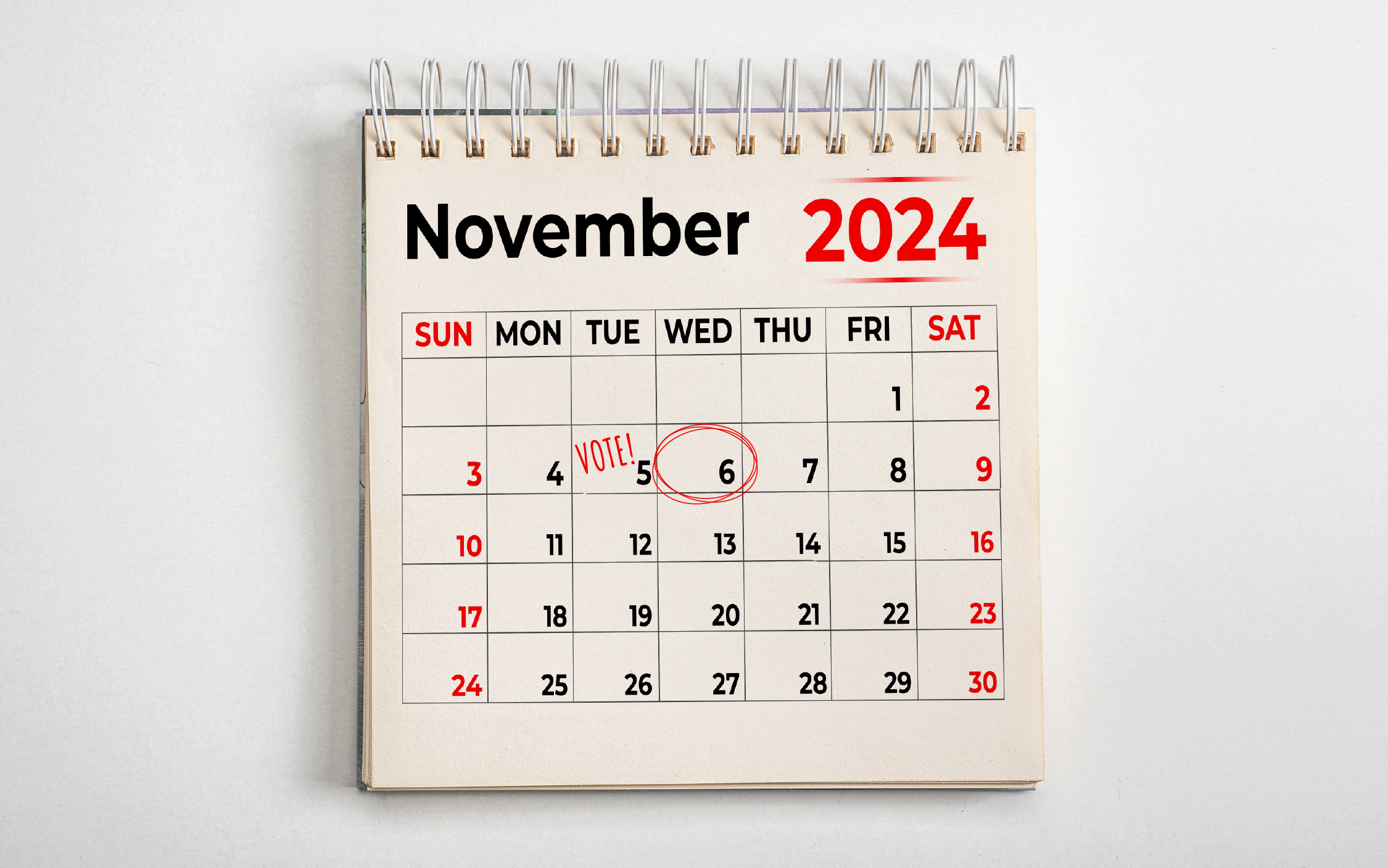So many of us are busy gearing up for GOTV ahead of the Most Important Election of Our Lives™. Maybe you’re feverishly refreshing polling data, then telling yourself polling data doesn’t matter. Rinse and repeat. With all of the variables and must-dos that come before the big day, we know it can also be hard to carve out the time to plan for what comes after Election Day.
Maybe you’ve started planning and maybe you haven’t. Either way, we’ve got some considerations for you to think through. Whether you’re with a large or small organization, whether you’re engaging in electoral work or not, all of us need to be ready for whatever may come on November 6.
Think of it not only as an exercise in resilience that will help your organization weather whatever is to come, but also as an opportunity to create the conditions for your group to seize new opportunities and safeguard the communities and constituencies you serve, regardless of who holds power.
Here our some of our recommendations for how to prepare:
Play out the Scenarios
Lay out the possible outcomes.
Nationally that would be:
- Harris win, Senate (D), House (D) – Democratic trifecta (unlikely)
- Harris win, Senate (R), House (D)
- Harris win, Senate (D), House (R)
- Harris win, Senate (R), House (R)
- Trump win, Senate (D), House (D) (unlikely)
- Trump win, Senate (R), House (D)
- Trump win, Senate (D), House (R)
- Trump win, Senate (R), House (R) – Republican trifecta
If you’re focused on state or local work, you can do a similar exercise with gubernatorial, state legislative, or municipal candidates, and/or ballot questions.
ID the challenges and opportunities that each presents
While some scenarios are more likely than others, each has its own unique set of challenges and opportunities. We can anticipate policy changes (we know what we’re fighting for, and Project 2025 lays out what the opposition wants in specific and horrifying detail!), funding landscapes (we’ve seen these outcomes before), and political climates that may emerge (we’ve got clues).
For example — in a Harris win scenario:
- Losing the Senate would severely damage Democrats’ ability to confirm federal judges and would slow political appointments. What might that mean for the issues you work on?
- President Biden will have a few lame-duck months. Are there opportunities to push the Biden administration to issue executive orders before he leaves office?
Prepare for political uncertainty. Defend democracy.
As we saw in 2020, we may not know the results of the presidential election right away. We could be in a situation where we are waiting for votes to be counted, no clear winner is declared, and yet a candidate prematurely declares themselves the winner.
No matter what happens, all of us need to inspire patience and confidence in the process — our democracy is literally on the line.
Some organizations will be calling to count every vote to ensure the will of the people prevails, some will be in the streets in support of free and fair elections, and some will choose not to engage. It’s important to know ahead of time what your organization plans to do.
Align on Organizational Priorities
Establish priorities
Next, based on each scenario and the anticipated political environment as well as your opportunity/challenge assessment, you’ll determine organizational priorities. Ask yourself questions like:
- What are your priority asks for a Harris presidency with a divided Congress?
- What are your specific approaches to beat back Project 2025 policies at the state level?
- How do you build power fighting against harmful policies in a Trump win scenario?
- How do these scenarios impact your ability to reach your long-term organizational goals? How might you pivot? What must be true for your organization to be able to make a pivot?
With any major moment, consider how a peak such as the election and any following shift can be leveraged to build long-term power to help meet your organizational mission and goals.
But don’t forget about the short term!
With the year-end fundraising season right around the corner, make sure you’re considering the fundraising potential of each scenario. For example, a Trump win may result in a short-term burst of fundraising energy. How might you leverage that?
Align with partners
Once you’ve mapped out policy and advocacy priorities, make sure you’re aligned with your partners. Do they see the same challenges and opportunities? What are their organizational priorities and how do those align (or not) with yours? What groundwork might you need to lay to create more alignment?
We collectively need to be prepared to act right out of the gate and can’t wait for a coalition meeting in December to get aligned on what to do next.
Prepare Talking Points and Materials Ahead of Time
Develop messaging
For each scenario, make sure you’re anticipating emotional reactions, the national mood, and the broader narrative atmosphere. How will your organization participate (or not) in those conversations? How will your supporters and members be feeling in each scenario?
Harris win:
- Short-term: Hope and joy for some
- Long-term: Potential apathy with another Democratic president or upset with a lack of progress in a divided Congress
Trump win:
- Short-term: Deep fear, hopelessness, grief, especially for marginalized communities and those targeted by Project 2025
- Long-term: Despondency, despair, fatigue from constant bad news
Remember that the story could be quite different at the state or local level, though the outcome of the presidential election will inevitably impact the tenor.
How will your messaging land on the day after the election? The week after? A month after?
Prep materials
Depending on how you plan to engage post-election, you’ll likely need to prep a slew of materials ahead of time. Consider getting started on:
- Digital communications for supporters/members: emails, SMS language, landing pages, donation pages, social media posts, website updates
- Digital advertising: new creative mock-ups and any tests you want to run (However, be prepared for advertising black-outs on Meta.)
- Media materials: organizational talking points, a media statement and/or press release
- Advocacy materials: a series of one-pagers for lawmakers about your policy priorities
Need help mapping all of this out? Let’s chat. M+R Win’s scenario planning services are designed to help your organization navigate potential outcomes, adapt to change, and stay resilient amidst changing landscapes. We’ll do this by leveraging our suite of services including strategic planning, integrated advocacy campaigns, media relations, social media strategy, influencer content/campaign development, digital organizing, coalition building and management, audience and message research, advertising, and digital fundraising.



